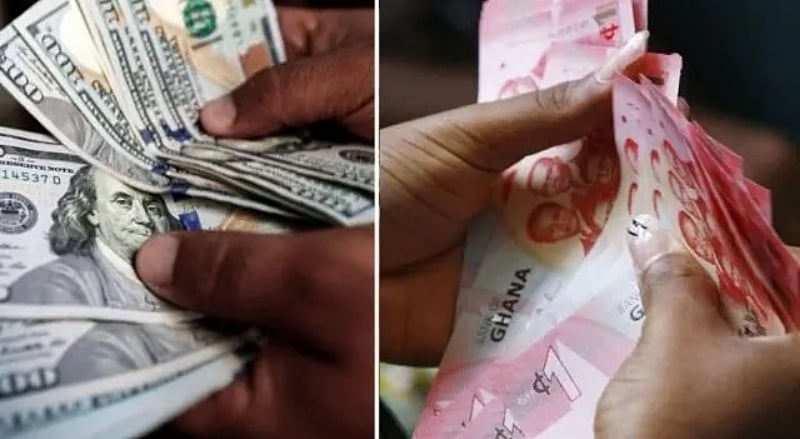The Ghanaian cedi’s performance against major international currencies on Saturday, July 5, 2025, presented a mixed picture, characterized by variations across different exchange platforms and transaction types. Cedirates.com, a trusted source for currency data in Ghana, reported an average buying rate of GHS10.32 and a selling rate of GHS10.96 for the US dollar. This signifies that, on average, individuals could purchase one US dollar for GHS10.32 and sell one US dollar for GHS10.96. However, these rates differed at forex bureaus, where the cedi weakened further, trading at GHS12.00 for dollar purchases and GHS12.50 for dollar sales. This disparity highlights the competitive dynamics of the currency exchange market, where forex bureaus often operate with slightly different margins.
The Bank of Ghana’s interbank market, representing transactions between banks, offered a more favorable exchange rate for the cedi. Here, the buying rate for the US dollar stood at GHS10.31, and the selling rate was GHS10.33. This narrower spread between buying and selling rates in the interbank market, compared to forex bureaus, is typical due to the higher volume and lower operational costs involved in interbank transactions. This difference underscores the advantage of transacting through formal banking channels for larger transactions, where the impact of exchange rate fluctuations is often more pronounced.
The cedi’s performance against the British pound mirrored its dynamics against the US dollar, with variations across different exchange platforms. Forex bureaus offered an average buying rate of GHS13.92 and a selling rate of GHS14.84 for the British pound. This contrasts with the Bank of Ghana’s interbank rate, which was recorded at GHS14.10. The existence of a single interbank rate for both buying and selling, as provided by the Bank of Ghana, simplifies large-scale transactions between banks. However, the wider spread at forex bureaus reflects factors such as operational costs and market demand, which tend to influence retail exchange rates more directly.
Similar trends were observed for the euro, with forex bureaus offering buying and selling rates of GHS12.06 and GHS12.82, respectively. The Bank of Ghana’s interbank rate for the euro stood at GHS12.13. This consistent pattern of a narrower spread in the interbank market and wider spreads at forex bureaus emphasizes the distinct market forces at play in these different segments of the currency exchange ecosystem. The interbank market’s greater stability reflects the regulated nature and larger volumes of transactions processed by financial institutions.
Money transfer operators, like LemFi and Afriex, presented a competitive landscape for remittances from the US or UK to Ghana. For US dollar remittances, LemFi offered a rate of GHS10.30, while Afriex offered GHS10.31. For British pound remittances, LemFi and Afriex offered rates of GHS14.00 and GHS14.02, respectively. These rates, generally close to the interbank rates, reflect the efficiency of these digital platforms in facilitating international money transfers. Their business models often leverage technology to minimize operational costs, allowing for competitive exchange rates for customers.
For euro remittances, Afriex quoted a rate of GHS12.13, and LemFi offered GHS12.12. These figures demonstrate the close competition between money transfer operators. Furthermore, for digital subscriptions like Netflix, Spotify, and Apple Music paid via Visa and Mastercard, the exchange rate was GHS11.13. This standardized rate for digital subscriptions suggests a specific agreement between payment processors and these service providers, likely designed to simplify international transactions and provide a consistent pricing structure. Overall, the Ghanaian cedi’s performance on July 5, 2025, showcases the complex interplay of market forces, transaction types, and platform-specific factors that shape currency exchange rates.


